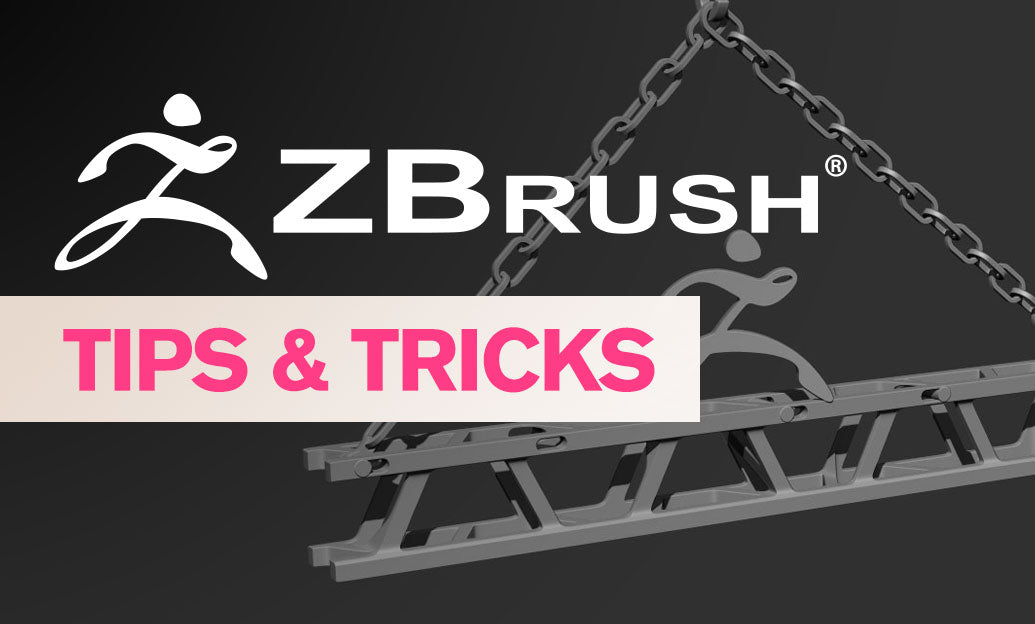Your Cart is Empty
Customer Testimonials
-
"Great customer service. The folks at Novedge were super helpful in navigating a somewhat complicated order including software upgrades and serial numbers in various stages of inactivity. They were friendly and helpful throughout the process.."
Ruben Ruckmark
"Quick & very helpful. We have been using Novedge for years and are very happy with their quick service when we need to make a purchase and excellent support resolving any issues."
Will Woodson
"Scott is the best. He reminds me about subscriptions dates, guides me in the correct direction for updates. He always responds promptly to me. He is literally the reason I continue to work with Novedge and will do so in the future."
Edward Mchugh
"Calvin Lok is “the man”. After my purchase of Sketchup 2021, he called me and provided step-by-step instructions to ease me through difficulties I was having with the setup of my new software."
Mike Borzage
Design Software History: Mastercam's Evolution: Transforming Manufacturing with CAM Innovation
November 07, 2024 6 min read


Introduction
Computer-Aided Manufacturing (CAM) software has been a driving force behind the modernization of manufacturing processes worldwide. By leveraging computer technology to plan, manage, and control operations of manufacturing equipment, CAM software enables industries to produce complex parts with unparalleled precision and efficiency. Mastercam, developed by CNC Software, Inc., stands as a pivotal player in the evolution of CAM technology. Since its inception in 1983, Mastercam has consistently pushed the boundaries of what is possible in computer-aided manufacturing, influencing a wide array of industries including automotive, aerospace, medical devices, and general machining. The significance of CAM software extends beyond mere automation; it represents a fundamental shift in industrial capability, allowing manufacturers to meet the increasing demands for complex geometries and tighter tolerances in a cost-effective manner. By streamlining the link between design and production, CAM software like Mastercam has revolutionized how products are brought from concept to reality.
Historical Development of Mastercam
The story of Mastercam begins with the founding of CNC Software, Inc. in 1983 by brothers Mark Summers, Jack Summers, and Brian Summers. Recognizing the burgeoning need for accessible and powerful CAM solutions, they set out to develop software that could harness the capabilities of emerging computer technologies to improve manufacturing processes. In its early years, Mastercam was primarily a 2D CAM system designed to streamline the programming of CNC (Computer Numerical Control) machines. The software quickly gained traction due to its user-friendly interface and powerful capabilities, setting it apart from competitors that were often cumbersome and difficult to learn.
Key milestones in Mastercam's development include the introduction of 3D modeling capabilities in the late 1980s, marking a significant leap forward in CAM technology. The release of Mastercam Version 3 in 1989 integrated surface and solid modeling tools, bridging the gap between Computer-Aided Design (CAD) and CAM. This integration was heavily influenced by early CAD systems such as AutoCAD and CADAM, reflecting a growing trend toward combining design and manufacturing processes into a seamless workflow. The software began to support more complex geometrical designs, enabling manufacturers to produce parts with intricate shapes that were previously difficult or impossible to create.
Throughout the 1990s and early 2000s, Mastercam continued to evolve, introducing features like multiaxis machining and high-speed toolpaths. The release of Mastercam X in 2005 represented a significant overhaul of the software, featuring a new interface, enhanced functionality, and improved customization options. This version emphasized ease of use without sacrificing the advanced capabilities that users had come to expect. The integration with solid modeling software and the ability to import various file formats expanded its versatility, making it a preferred choice for manufacturers around the world. Mastercam's development over the years reflects a commitment to innovation and responsiveness to the needs of the industry, solidifying its position as a leader in the CAM software market.
Core Technologies and Innovations
Mastercam pioneered several key technologies that have become standards in the CAM industry. One of the most significant is its advanced toolpath generation techniques, which provide users with a variety of strategies to machine parts efficiently. These techniques include:
- Contour Milling: Precise machining of edges and profiles, essential for producing parts with accurate dimensions.
- Pocketing: Efficient removal of material from cavities and pockets within a part.
- Drilling and Tapping: Accurate hole-making operations, supporting a wide range of tooling and configurations.
- Dynamic Milling: Adaptive toolpaths that maintain consistent chip load, resulting in enhanced productivity and prolonged tool life.
The development of optimization algorithms for machining processes is another critical area of innovation. These algorithms consider factors such as material properties, machine capabilities, and tooling options to generate optimal machining strategies. Mastercam's intelligent toolpaths offer benefits such as:
- Reduced Machining Time: By minimizing unnecessary movements and optimizing cutting conditions, production cycles are shortened.
- Extended Tool Life: Maintaining optimal cutting parameters reduces wear and tear on tools, lowering operational costs.
- Improved Surface Finish: Adjusting feed rates and tool engagement leads to smoother surfaces, reducing the need for secondary finishing processes.
Over time, Mastercam has expanded its feature set to include a wide array of add-ons and specialized modules. Notably, the software introduced support for 5-axis machining, enabling the production of complex geometries that are impossible with traditional 3-axis machines. This capability is essential in industries where intricate parts with undercuts and variable angles are common. Additionally, Mastercam added modules for:
- Wire Electrical Discharge Machining (EDM): Precise cutting of hard materials with complex shapes, often used in tool and die making.
- Lathe and Turning: Dedicated tools for programming CNC lathes and turning centers, crucial for rotational parts.
- Mill-Turn: Integration of milling and turning operations in a single setup, increasing efficiency and reducing handling.
- Swiss Machining: Specialized support for Swiss-style CNC machines, commonly used in the production of small, high-precision components.
The transition from 2D to 3D CAM applications was a pivotal moment in Mastercam's history. This evolution allowed users to:
- Create and Machine Complex Surfaces and Solids: Enabling the production of parts with sophisticated geometries required in advanced engineering applications.
- Enhance Accuracy of Toolpaths: Working directly with 3D models reduced errors and improved the precision of the machined parts.
- Reduce Programming Time: Automated features and associativity between models and toolpaths streamlined the programming process, increasing productivity.
Mastercam also integrated simulation and verification tools into its software, allowing users to visualize machining operations before they occur. This feature helps identify potential collisions, toolpath errors, and inefficiencies, saving time and resources by preventing costly mistakes on the shop floor. Moreover, the software's openness to customization through scripting and APIs has enabled users to tailor solutions to their specific needs, further enhancing its versatility and appeal.
Impact on the Industry and Future Outlook
Mastercam has profoundly transformed manufacturing processes by providing tools that enhance efficiency, accuracy, and flexibility. Industries such as aerospace have significantly benefited from its technology. The aerospace industry demands components with intricate designs and exacting tolerances. Mastercam's advanced multiaxis machining capabilities enable the production of such components, including turbine blades, structural elements, and complex fixtures. Similarly, the automotive industry utilizes Mastercam for the manufacturing of engine components, transmission parts, molds, and dies. The software's ability to optimize machining operations reduces production times and costs, allowing automotive companies to be more competitive in a global market.
Beyond these industries, Mastercam has supported the growth of small to medium-sized enterprises by making advanced manufacturing technologies more accessible. Machine shops and custom fabricators have leveraged Mastercam to expand their service offerings, improve turnaround times, and enhance product quality. The software's user-friendly interface and comprehensive support network lower the barrier to entry for advanced CAM programming, fostering innovation and competitiveness across the manufacturing sector. Mastercam's educational programs have also played a role in training the next generation of machinists and programmers, ensuring a skilled workforce for the future.
Looking ahead, there is considerable speculation on how CAM software like Mastercam will evolve to meet new manufacturing challenges. Key areas of potential development include:
- Integration with Additive Manufacturing: Combining subtractive and additive processes for hybrid manufacturing solutions, offering unprecedented flexibility in product development.
- Adoption of Artificial Intelligence and Machine Learning: Enhancing toolpath optimization, predictive maintenance, and decision-making capabilities based on historical data and analytics.
- Implementation of IoT and Industry 4.0 Principles: Enabling real-time data exchange, smart factory automation, and adaptive control of production environments.
- Focus on Sustainability: Incorporating features that minimize material waste, reduce energy consumption, and promote eco-friendly manufacturing practices.
These developments could revolutionize the way complex parts are produced, offering new opportunities for efficiency and innovation. Mastercam's potential to adapt and integrate these technologies positions it as a key player in the future of manufacturing. By remaining at the forefront of technological advancements, Mastercam is poised to continue influencing the industry in significant ways.
Conclusion
Mastercam's legacy in the realm of CAM software is one of continuous innovation and substantial impact on the manufacturing industry. Its crucial role in advancing CAM technology has not only transformed how parts are made but also how industries approach design and production challenges. By enabling the efficient production of complex, high-precision components, Mastercam has contributed to the success and competitiveness of numerous industries. The software's evolution reflects a commitment to addressing the needs of manufacturers, from small machine shops to multinational corporations.
The ongoing development of Mastercam continues to shape the landscape of design and manufacturing today. As new technologies emerge and manufacturing challenges evolve, Mastercam remains at the forefront, integrating cutting-edge features and anticipating industry trends. Its adaptability and forward-thinking approach ensure that it will continue to meet the needs of manufacturers in the future. Whether through integrating additive manufacturing, embracing artificial intelligence, or enhancing connectivity through IoT, Mastercam is well-positioned to lead the next wave of manufacturing innovation.
Finally, the importance of innovation in CAM software cannot be overstated for future industrial applications. As manufacturers face increasing demands for customization, complexity, and efficiency, tools like Mastercam will be essential in enabling them to meet these challenges. By fostering innovation, supporting advanced manufacturing technologies, and integrating with broader digital ecosystems, CAM software will continue to be a cornerstone of industrial progress. Mastercam's journey reflects the broader trajectory of CAM software development, highlighting the critical role these tools play in driving industrial progress and shaping the future of manufacturing.
Also in Design News

Cinema 4D Tip: Optimizing Layer Management for Enhanced Workflow in Cinema 4D
October 23, 2025 3 min read
Read More
ZBrush Tip: Optimizing ZBrush Sculpting with the Insert Ice Brush for Realistic Ice Effects
October 23, 2025 2 min read
Read More
Bluebeam Tip: Implementing Custom Statuses for Enhanced Workflow Management in Bluebeam Revu
October 23, 2025 2 min read
Read MoreSubscribe
Sign up to get the latest on sales, new releases and more …


